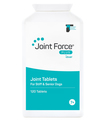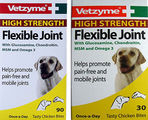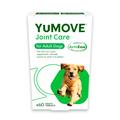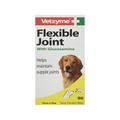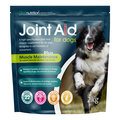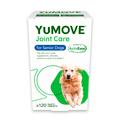Hip dysplasia has always been a concern for dog owners, and lots of research has been done to try and identify a cause and develop preventative measures.
But while the cause and treatment continue to evade us, lets look at what we do know and find out how some simple steps can help reduce your dog's chances of being affected.
- All puppies are born with normal hips - but the process of developing dysplasia begins shortly after birth when the cartilage becomes bone. The most critical period for growth is up to 8 weeks of age, so it is important during this time not to over-feed or over-exercise, reasons for which we'll come onto later.
- Genes that cause hip dysplasia have not been identified in any breed - that said, genes that are associated with hip dysplasia have been found, and these breeds tend to have a higher incidence of the condition, although the link isn't proven. The breeds that may be predisposed are German shepherds, Labrador retrievers, and Bernese mountain dogs.
- Early intervention is crucial - lameness and problems in the joint can be identified as early as 4 months old, and the critical period for most treatments is usually up to 24 months before skeletal growth is complete, so it is important not to overlook signs and miss this window of opportunity.
- Watch out for environmental factors at play - the top three being joint laxity, weight and exercise. We've already touched on how over-exercising can cause problems, but weight is also something to be mindful of. Dogs carrying excess weight will put greater force through their joints, putting them at higher risk of hip dysplasia and osteoarthritis.
- Joint laxity is the primary cause of hip dysplasia - this develops shortly after birth when the head of the femur no longer fits snugly in the acetabulum. The round ligament or teres ligament is responsible for holding this in place, so if laxity develops, movement will occur that causes damage to the rim of the socket.
- No cause for laxity has been identified - it is likely to be a concentration of factors including genetic weaknesses and environmental stresses. The earlier problems are identified, the earlier reparative treatments can be pursued to maintain joint stability.
- Puppies that weigh more at birth or have a higher growth rate are more at risk - studies have found that dogs on a restricted diet are far less likely to develop dysplasia than dogs on normal rations (and likely to live longer too!) Unfortunately, many dogs are overweight and this could be the single most significant environmental factor affecting the development of hip dysplasia.
- The jury is out on exercise - while exercise strengthens the legs and pelvis and helps increase the stability of the hip joint, too much of the wrong kind of exercise can have a detrimental effect on the development of the joint. High impact activities should be avoided in puppies and young dogs, and you should try to follow the rule of thumb laid down by the Kennel Club: five minutes exercise for every month of age, so fifteen minutes for a puppy that is 3 months old etc.
- Nutrition is key - if your puppy is fed a complete and balanced commercial kibble, there is no real need to give supplements, unless advised to by a vet. Supplements containing added calcium can cause serious problems, especially in dysplastic-prone dogs, so focus on providing a high-quality diet given at the right amount. Joint supplements can help support the joints when started at an early age, but they are most effective alongside a proper diet and exercise, and won't provide a miracle on their own.
- Reducing the prevalence of hip dysplasia is possible - through genetic testing, and a better understanding of how environmental factors affect joint health. Weight management, appropriate exercise, quality nutrition and early intervention at the first signs of lameness can all help reduce your dog's chances of developing dysplasia or suffering through the subsequent pain and discomfort.
If you have any thoughts on this discussion, feel free to comment below and share it with our other readers!
Written by: Hannah


